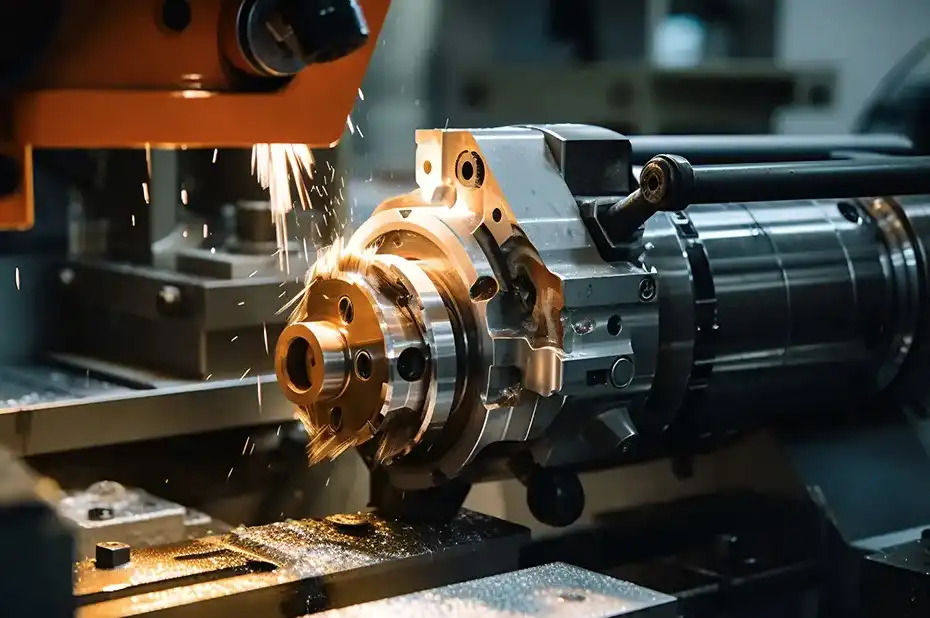Optimizing Geometry for Efficient Machining
Simplifying Part Geometry
One of the most effective ways to design machined parts for easier manufacturing is by simplifying the part geometry. Complex shapes and intricate features can significantly increase machining time and costs. By streamlining the design and eliminating unnecessary complexities, manufacturers can reduce the number of operations required, minimize tool changes, and improve overall production efficiency. This approach often involves using basic geometric shapes, avoiding sharp internal corners, and incorporating generous fillets and radii where possible.
Considering Tool Accessibility
Tool accessibility is a critical factor in machining operations. Designers should ensure that all features of the part can be easily reached by standard cutting tools. This may involve avoiding deep cavities, providing adequate clearance for tool paths, and considering the limitations of different machining processes. By designing with tool accessibility in mind, manufacturers can reduce the need for specialized tooling or complex setups, leading to more efficient and cost-effective production.
Standardizing Features and Dimensions
Incorporating standardized features and dimensions in machined part designs can significantly streamline the manufacturing process. By using common hole sizes, thread types, and other standard features, designers can reduce the need for custom tooling and simplify the machining process. This approach not only improves manufacturing efficiency but also enhances part interchangeability and reduces potential errors during assembly.
Material Selection and Its Impact on Machinability
Evaluating Material Properties
The choice of material for machined parts plays a crucial role in determining the ease of manufacturing. Different materials exhibit varying levels of machinability, which directly affects cutting speeds, tool wear, and surface finish quality. When selecting materials, designers should consider factors such as hardness, ductility, and thermal properties. Materials with good machinability, such as certain grades of aluminum or brass, can often lead to faster production times and reduced tool wear compared to harder or more abrasive materials.
Balancing Performance and Manufacturability
While material selection is often driven by performance requirements, it's essential to balance these needs with manufacturability considerations. In some cases, slight modifications to material specifications or heat treatment processes can significantly improve machinability without compromising the part's functional requirements. Collaborating with material suppliers and manufacturers can provide valuable insights into optimizing material choices for both performance and ease of manufacturing.
Considering Alternative Materials
In some instances, exploring alternative materials can lead to improved manufacturability and cost-effectiveness. For example, replacing a traditionally machined metal part with an injection-molded plastic component might be more economical for high-volume production. Similarly, advancements in materials science have led to the development of new alloys and composites that offer improved machinability while maintaining or enhancing performance characteristics. Staying informed about these developments can open up new possibilities for optimizing part designs.
Leveraging Design for Manufacturability (DFM) Principles
Early Collaboration with Manufacturers
Implementing Design for Manufacturability (DFM) principles from the early stages of product development is crucial for creating machined parts that are easy to manufacture. Engaging with manufacturers early in the design process allows designers to gain valuable insights into potential manufacturing challenges and opportunities for optimization. This collaborative approach can lead to design modifications that significantly improve producibility without compromising functionality. Manufacturers can provide input on preferred tool sizes, optimal feature orientations, and potential cost-saving strategies that might not be apparent to designers working in isolation.
Minimizing Setup Changes
Reducing the number of setups required to machine a part can dramatically improve manufacturing efficiency and reduce costs. Designers should strive to create parts that can be machined with as few repositionings as possible. This may involve consolidating features on the same face of the part, aligning critical dimensions to a common reference point, or designing parts that can be machined from a single piece of stock. By minimizing setup changes, manufacturers can reduce production time, improve accuracy, and decrease the likelihood of errors associated with multiple setups.
Incorporating Design Analysis Tools
Leveraging advanced design analysis tools and simulation software can greatly enhance the manufacturability of machined parts. These tools can help designers identify potential issues such as thin walls, deep pockets, or areas prone to vibration during machining. By conducting virtual simulations of the manufacturing process, designers can optimize their designs for improved machinability before physical prototyping begins. This proactive approach can save significant time and resources in the development process while ensuring that the final design is well-suited for efficient manufacturing.
In conclusion, designing machined parts for easier manufacturing requires a holistic approach that considers geometry optimization, material selection, and DFM principles. By simplifying part geometry, selecting appropriate materials, and collaborating closely with manufacturers, designers can create parts that are not only functional but also cost-effective and efficient to produce. Implementing these strategies can lead to significant improvements in production efficiency, reduced manufacturing costs, and ultimately, a more competitive product offering. For more information on optimizing your machined part designs or to discuss your specific manufacturing needs, please contact us at info@welongpost.com.




